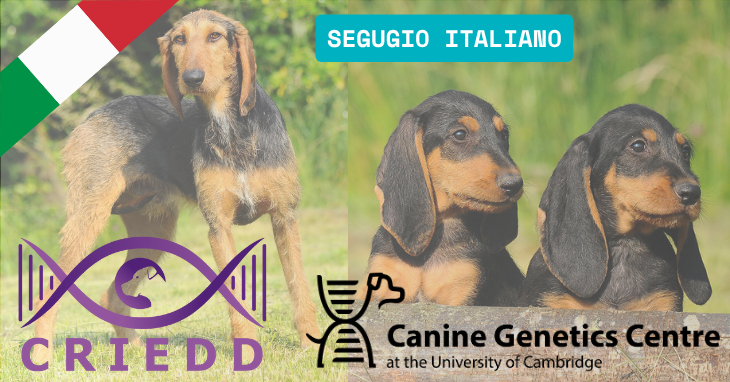
Our research project dedicated to inherited eye disease (IED) in dogs, CRIEDD, often sees us work in close collaboration with veterinary ophthalmologists. When they see novel diseases, or a disease emerging in a new breed of dog, they will send us DNA samples so that we can work together to identify the genetic cause.
A couple of years ago we were contacted by a veterinary ophthalmologist based in Italy who had performed an ophthalmic evaluation of a family of Segugio Italiano dogs. She found that three dogs within the litter were suffering from glaucoma. In addition, she noted that the glaucoma affected dogs had additional systemic problems. They had short limbs, abnormal dentation and skull shape and their coats were very patchy. The clinical signs overlapped with some human syndromes, but at this point in time we were not entirely sure what the disease was.
The first thing we did was to check the affected dogs DNA against all of the known IED variants using our in-house designed mutation panel. The dogs were all clear, so we concluded that a novel variant was responsible. So, we whole genome sequenced two of the affected dogs and the dam (who was unaffected, as was the sire).
The results identified an excellent candidate variant in a gene that causes a rare disease in humans known as GAPO (Growth retardation, Alopecia, Pseudoanodontia and Ocular abnormalities) syndrome. The clinical signs in the Segugio Italiano dogs and GAPO-affected humans completely overlap and so we believe that this is a canine form of the disease. It is rare in humans, only 60 cases have been reported to date, but it is deadly and drastically reduces the life expectancy of affected individuals.
We have now validated the variant in a cohort of Segugio Italiano dogs and against the genomes of nearly 2000 dogs and it segregates perfectly and is only present in this breed. We are currently working out the effects that the variant has on the protein and writing a manuscript that we will submit for peer review publication.
We believe that this is a rare disease, but we are currently designing a DNA test so that Segugio Italiano dog owners/breeders can test their dogs and identify carriers. Whilst rare, it is a horrible disease and so we would like to prevent future generations of dogs being affected.

